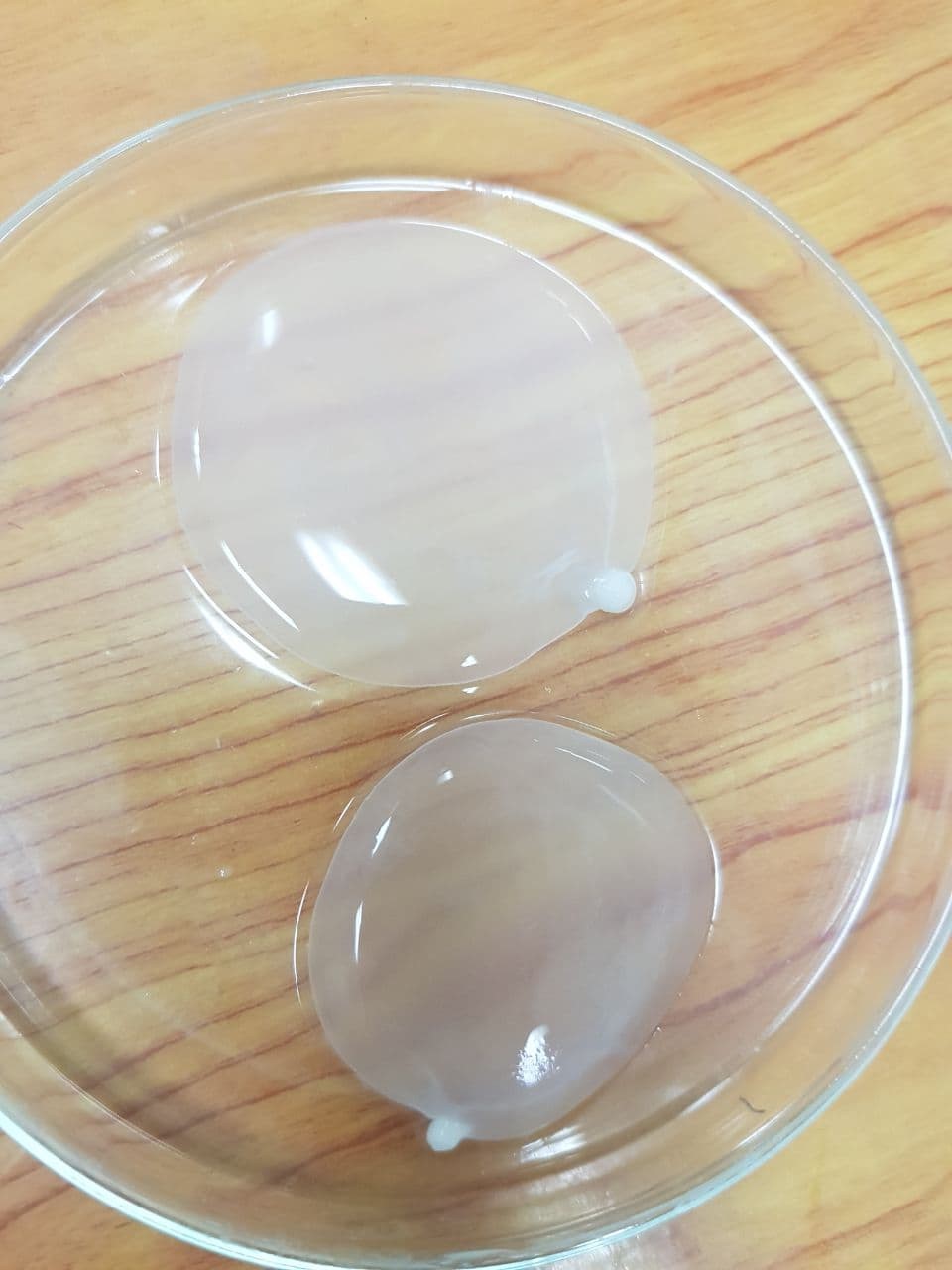Molecular Characterization of Cysticercus tenicollis from Slaughtered Sheep and Goats in Basrah Province, Iraq
Abstract
Taenia hydatigenia refers as cestoda in carnivorous species, whereas Cysticercus tenicollis is a common larval stage found in herbivorous animals, ruminants and swine. An investigation into molecular identification of C. tenicollis from slaughtered sheep and goats was carried out by creating Cysticercus species-specific and Cysticercus specific primers in Basrah governorate, southern Iraq. Study the molecular characterization of C. tenicollis and C. ovis from sheep and goats, by designing primer to Cysticercus spp. and specific primers to detect C. tenicollis and C. ovis. a total of 23 sheep (7 males, 16 females) and 23 goats (19 males, 4 females) were inspected. This investigation took place in Basrah province from November 2020 to November 2021, and the animal isolates were gathered throughout that time. The primers were developed as universal for the identification of Cysticercus species; they can amplify a portion of (ND1) and (COX1) genes of C. tenicollis and C. ovis, respectively. In general, Each cyst was identified as belonging to the genus T. hydatigenia by its unique mt-CO1 sequence, which yielded 267 bp product. This strain of T. hydatigenia is 100% identical to the Iraqi strain first isolated from Southern Iraq and entered into the Gene Bank under the designation "Iraqi strain," as shown by multiple sequence alignment of the nucleotide with previously published references (OK3556791, OK356792, OK356793, and OK356794).
References
Soulsby, EJL.(1982). Helminths, Arthropods and Protozoa of Domesticated Animals. London: Bailliere Tindall.
Al-Emarah, GY.(1999). Epidemiological study of nematode in digestive tract of dogs in Basrah area. M. Sc. thesis, Coll. Vet. Med., Univ. Baghdad. 86 pp. (In Arabic).
Al-Azizz, S. (2005). Epidemiological and sero-immunological studies of Toxocara canis (Werner, 1782) with record of some species of intestinal helminthes from stray dogs in Basrah governorate. Ph.D. Thesis, Coll. of Educ. Univ. of Basrah. 163.
Essa, IM. , Al-Azizz, SA.(2011). Studies on Cysticercus tenicollis collected from slaughtered sheep and goats in Basrah abattoir, Iraq. Egyptian J Experimental Biology (Zool.) ,7(2):343 – 347.
Taylor, M., Coop, R., Wall, R.(2007). Veterinary Parasitology. Oxford, UK. Google Scholar: Blackwell Publishing.
Al-Azizz, S., Essa, I.(2010). A study of comparative histology of larval stage Cysticercus tenuicollis in both normal and laboratory animals in Basrah city. Fourth Scientific Conference/ Wassit University.19-20/10/2010.
Kaufmann, J.(2013). Parasitic Infections of Domestic Animals: A Diagnostic Manual. Basel-Boston-Berlin: Birkhauser.
Edwards, G ., Herbert, I.(1980). The course of Taenia hydatigenia infections in growing pigs and lambs: clinical signs and post-mortem examination. British Veterinary J,136: 256–264.
Blazek, K., Schramlova, J., Hulinska, D.(1985). Pathology of the migration phase of Taenia hydatigenia (Pallas, 1766) larvae. Folia Parasitologia. 32: 127–137.
Al-Azizz, S., Essa, I., Majeed, SK.(2012). Study of the Pathological Lesions in Mice Fed Segments of Taenia hydatigenia. Egypt J Exp Biol (Zool.), 8(2): 303 – 308.
Bamorovat, M., Radfar, MH., Derakhshanfar, A et al.(2014). A comparative evaluation of hematological, biochemical and pathological changes among infected sheep with Cysticercus tenicollis and non-infected control group. J Parasitic Disease 38: 399–403.
McManus, D. P., & Smyth, J. D.(1978) Differences in the chemical composition and carbohydrate metabolism of Echinococcus granulosus (horse and sheep strains) and E. multilocularis. Parasitology, 77(1), 103-109.
Saitou, N., Nei. (1987).The neighbour-joining method: A new method for reconstructing phylogenetic trees. Molecular Biology and Evolution 4:406-425.
Felsenstein, J.(1985). Confidence limits on phylogenies: An approach using the bootstrap. Evolution.39:783-791.
Jukes, TH ., Cantor, CR.(1969). Evolution of protein molecules. In Munro HN, editor, Mammalian Protein Metabolism, pp. 21-132, Academic Press, New York.
Kumar, S., Stecher, G., Tamura, K.(2016). MEGA7: Molecular Evolutionary Genetics Analysis version 7.0 for bigger datasets. Molecular Biology and Evolution 33:1870-1874.
Utuk, AE., Piskin, FC.(2012). Molecular detection and characterization of goat isolate of Taenia hydatigenia in Turkey. Scientific World Journal, 2012. 962,732.
Khudair, AA.(1998). Study on the epidemiology of the larval stage Cysticercus tenicollis of the cestode Taenia hydatigenia in sheep and goats. M.Sc. Thesis, Baghdad University, College of Veterinary Medicine. Pp: 58.
Lavikainen, A., Haukisalmi, V., Deksne, G., et al. (2013).Molecular identification of Taenia spp. in the Eurasian lynx (Lynx lynx) from Finland. Parasitol., 140 (5): 653–662.
Hama, AA., Shareef, OH.(2016). Morphological and morphometric study of Echinococcus granulosus (metacestode) in Sulaimani Province / Kurdistan, Kurdistan J. Applied Research 7684 (1): 1–6.
Hassan, ZI., Meerkhan, AA., Boufana, B., et al. (2017).Two haplotype clusters of Echinococcus granulosus sensu stricto in northern Iraq (Kurdistan region) support the hypothesis of a parasite cradle in the Middle East. Acta Tropica, 172: 201–207.
Hama, AA., Hassan, ZI., Mro, SMW., et al. (2015).A Morphologically Unusual Echinococcus granulosus (G1 Genotype) Cyst in a Cow from Kurdistan - Iraq. Epidemiology Open Access. 2: 2–4.
Hama, AA., Mero, WMS ., Jubrael, JMS.(2012). First Report of Sheep Strain in Kurdistan-Iraq. Second international conference. Bali (Indonesia), (4):.41–44.
Mero, WMS., Jubrael, JMS., Hama, AA.(2013). Prevalence of Hydatid Disease Among Slaughtered Animals in Slemani Province/ Kurdistan-Iraq. J University of Zakho. 1, (2): 1–5.
González, LM., Villalobos, N., Montero, E. et al.(2006). Differential molecular identification of Taeniid spp. and Sarcocystis spp. cysts isolated from infected pigs and cattle. Vet Parasitol, 142(1-2): 95-101.
Mohammed, AA., Kadir, MAA.(2020). Molecular and phylogenetic studies of Taenia hydatigenia cysts in native sheep in Sulaimaniya Province, Iraq. Indian J Animal Sciences, 90(1), 22-27.
Boufana, B., Scala, A., Lahmar, S., et al .(2015). A prelimi nary investigation into the genetic variation and population structure of Taenia hydatigenia from Sardinia, Italy Vet Parasitol, 214:67–74.
Laurimäe, T., Kinkar, L., Moks, ., et al. (2018). Molecular phylogeny based on six nuclear genes suggests that Echinococcus granulosus sensu lato genotypes G6/G7 and G8/G10 can be regarded as two distinct species. Parasitol., 145:1929–1937.







